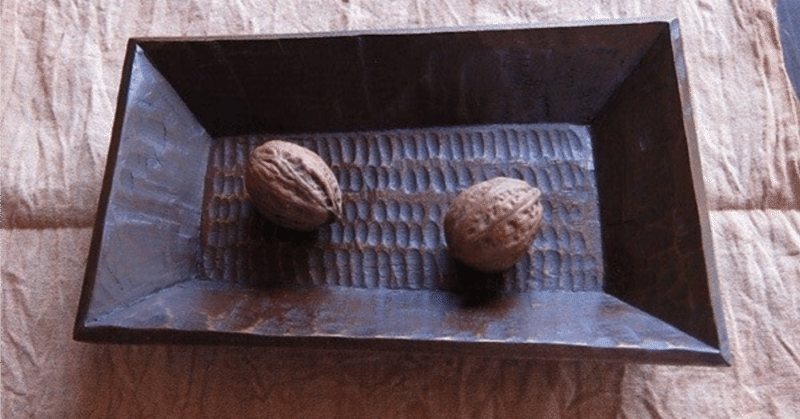
アポロンへのラブレター クルミの香りでLoveletter to Apollon through the scent of Walnut
Let me pour the torrential mud, black, with walnut's fragrance.*1
Into Sea Nymph's shimmering azure pond-mirror, salty
Her Eye that sheds tender, foamy white tears, in ebb and flow
Let wet earth stain Her sorrow, let that void called cold water
Be filled with a fertile island of black mud.
The island which is the grave-mound of me.
Rife with unborn seeds' breath, so to take in the ocean-winds/
I am Apollon, Son of the Sun, Black-Faced and merciful
And I have came to fill the the Clear-Orb of Life's maze (the Eye).
With warm and comforting clump of darkness (of the soil)
God, allow me this crapulence in absolute abstemiousness.
和訳 (AIと辞書で)
クルミの香りのする、黒い、奔流の泥を注ごう。
海の精(ニンフ)の揺らめく紺碧の池の鏡に、塩辛く
優しく泡立つ白い涙を流す彼女の眼に、干満の中で
濡れた大地が彼女の悲しみを染め、冷たい水と呼ばれるその虚空を
黒い泥の肥沃な島で満たされるように。
私の墓標となる島。
未生の種子の息吹に満ち、海風を取り込むように。
私はアポロン、太陽の子、黒い顔をした慈悲深い者。
そして私は、命の迷路の澄み切った玉(眼)を満たすために来た。
温かく心地よい闇の塊(土の)で
神よ、この絶対の禁酒による酩酊を与えてくれ
*1
"In Skopelos, a Greek island in the Aegean Sea, local legend suggests whoever plants a walnut tree will die as soon as the tree can "see" the sea.[24] Most planting is done by field rats (subfamily Murinae). In Flanders, a folk saying states: "By the time the tree is big, the planter surely will be dead." (Dutch: Boompje groot, plantertje dood). These sayings refer to the relatively slow growth rate and late fruiting of the tree.[25]
Benevento in southern Italy is the home of an ancient tradition of stregoneria. The witches of Benevento were reputed to come from all over Italy to gather for their sabbats under the sacred walnut tree of Benevento. In 1526, Judge Paolo Grillandi wrote of witches in Benevento who worship a goddess at the site of an old walnut tree.[26] This legend inspired many cultural works, including the 1812 ballet Il Noce di Benevento (the walnut tree of Benevento) by Salvatore Viganò and Franz Xaver Süssmayr, a theme from which was adapted into a violin piece called Le Streghe by Niccolò Paganini.[27] The Beneventan liqueur Strega depicts on its label the famous walnut tree with the witches dancing under it.[28]"
「エーゲ海に浮かぶギリシャのスコペロス島では、クルミの木を植えた者は、その木から海が「見える」ようになったとたんに死んでしまうという言い伝えがある[24]。フランダース地方では、民間の言い伝えにこうある: 「木が大きくなる頃には、植えた人は必ず死んでいる。(オランダ語:Boompje groot, plantertje dood)。これらのことわざは、木の成長速度が比較的遅く、結実が遅いことを指している[25]。
南イタリアのベネヴェントは、ストレゴネリアの古くからの伝統の故郷である。ベネヴェントの魔女たちは、ベネヴェントの聖なるクルミの木の下でサバトを過ごすためにイタリア中から集まってきたと言われている。1526年、裁判官のパオロ・グリランディは、古いクルミの木がある場所で女神を崇拝するベネヴェントの魔女について記している[26]。この伝説は、サルヴァトーレ・ヴィガノとフランツ・クサヴァー・シュスマイヤーによる1812年のバレエ『ベネヴェントのクルミの木』(Il Noce di Benevento)を含む多くの文化作品にインスピレーションを与えた。 [27]ベネヴェントのリキュール「ストレガ」のラベルには、有名なクルミの木とその下で踊る魔女が描かれている[28]。
この記事が気に入ったらサポートをしてみませんか?
